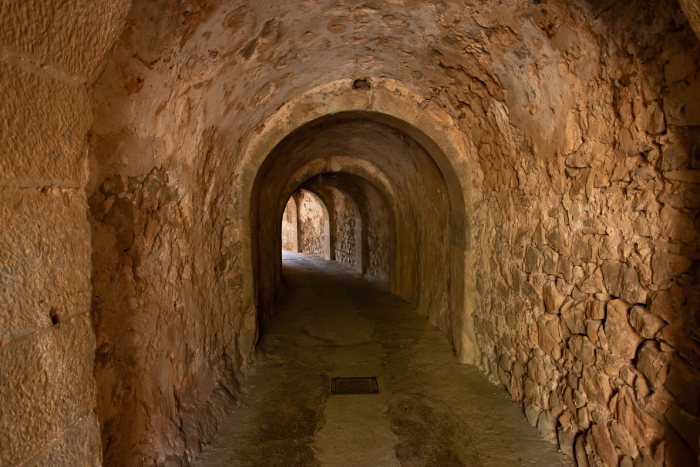Table of contents
Why Spinalonga Deserves a Spot on Your Crete Bucket List Nestled in the tranquil waters of Elounda, the island of Spinalonga is far more than just a pretty Greek islet. It's a living time capsule, combining dramatic history, stunning architecture, and surreal beauty within just 34 hectares. Whether you're exploring Crete by car or still planning your itinerary, a stop on Spinalonga will add depth and meaning to your vacation.
A Brief History (With a Haunting Past)
Era / Period Use of Spinalonga Notable Facts
1579 – 1715 Venetian Fortress Built by the Venetians as a naval and commercial defense point; remained under their control 46 years after the fall of Crete.
1600s – 1800s Refuge for Rebels Used as a hideout during Cretan revolts; ideal due to its fortification and remote location.
1715 – 1903 Ottoman Stronghold Became a thriving Muslim community; population peaked under Ottoman rule with homes, a mosque, and local trade.
1903 – 1957 Leper Colony One of Europe’s last leper colonies; surprisingly self-sufficient with electricity, schools, and a social scene.
1940s (WWII) Communications Outpost Used to transmit signals and monitor naval activity between Crete and Cairo. Played a quiet but strategic military role.
Spinalonga Island as a Venetian Fortress (1579–1715) The Venetians, experts in naval defense, built one of Crete’s strongest coastal fortifications here in 1579 to guard the Gulf of Mirabello.
The fortress was so robust that even after the Ottomans conquered Crete in 1669, Spinalonga remained under Venetian control for another 46 years. The island became a vital trading and naval outpost, with a garrison, churches, and storehouses built into the cliffs. Its bastions still stand today—ideal for panoramic photos and history daydreaming.
Spinalonga Island: Refuge for Rebels During Ottoman Crete During times of civil unrest, Spinalonga served as a sanctuary for Christian rebels and resistance fighters.
It offered a safe haven from Ottoman reprisals, especially during the Cretan Revolts of the 19th century. Hidden coves and elevated vantage points made it a strategic stronghold.
Spinalonga as an Ottoman Stronghold in Crete (1715–1903) After finally taking the island from the Venetians in 1715, the Ottomans used Spinalonga as a fortified Muslim settlement.
It became home to dozens of Turkish families, complete with a mosque and houses carved from Venetian ruins. The island’s population peaked during this period, developing into a full-fledged Ottoman village.
Spinalonga Island: Greece’s Leper Colony (1903–1957) Perhaps the most poignant chapter in Spinalonga’s history: for over 50 years, it served as Greece’s official leper colony.
People diagnosed with leprosy (Hansen’s disease) were forcibly relocated here to prevent the spread of the disease. Despite isolation, residents built a self-sufficient community with a school, theater, and even electricity before many mainland towns had it. The island was finally closed in 1957 and has since become a symbol of human endurance and dignity. Spinalonga inspired Victoria Hislop’s bestselling novel “The Island.”
Spinalonga Island’s Secret Role in WWII in Crete During World War II, Spinalonga became a strategic link between Crete and Cairo, used for naval surveillance and secret transmissions.
Though abandoned as a colony, its structures and elevation made it ideal for military communication and observation. Stories from the war period remain largely untold, adding a mysterious layer to the island’s legacy.
How to Get There: Travel Tips for Visitors Spinalonga sits at the entrance of Elounda Lagoon, in the Gulf of Mirabello, northeastern Crete—just a short boat ride from Plaka, Elounda, or Agios Nikolaos.
Get your rental car and drive to Plaka or Elounda on Crete’s northeast coast. Plaka is the closest departure point, just a 5-minute boat ride to Spinalonga, while Elounda offers more amenities and a longer, scenic 20-minute ride. Boats depart every 30–45 minutes during high season from Plaka, Elounda, or Agios Nikolaos.
Go early morning or late afternoon for cooler temps, soft light, and fewer crowds.
Exploring Spinalonga Island: What to Expect
Venetian Fortress Walls with Panoramic Sea Views
Spinalonga’s formidable fortress walls were constructed by the Venetians in the late 1500s to protect one of the most strategic natural harbors in the eastern Mediterranean.
Abandoned Homes & the Haunting Hospital from the Leper Colony Era
Walking through the remains of Spinalonga’s early 20th-century leper colony is both haunting and deeply moving.
Informative Signs and Optional Guided Tours
Scattered throughout the island are multilingual signs explaining each area’s purpose and history.
Peaceful Walking Paths, Rocky Coves & Instagrammable Corners
Despite its turbulent past, Spinalonga has a surprisingly serene and natural beauty.
Travel Tip: Spinalonga is uninhabited today, and facilities are very limited. There’s very little shade, so bring a hat, sunscreen, and plenty of water—especially in summer.
Don’t Miss These Photo-Worthy Spots 1. The Main Gate & Arched Passageways
2. View from the Top Bastion (53 Meters High)
3. The Church of Saint Panteleimon
4. The Hospital Ruins & Sea-Facing Cells
Combine It With Other Must-See Sights near Spinalonga Island
Kolokytha Beach: A hidden cove known for its crystal-clear turquoise waters and calm swimming spots.Plaka Village: A charming fishing village with quaint tavernas, artisan shops, and peaceful seaside views.Agios Nikolaos: Bustling town famous for its lakeside promenade, boutique shopping, and sunset dinners.Elounda Village: A former fishing port turned luxury resort hub, with sea-view cafés and a laid-back vibe.Areti Monastery: A serene 16th-century monastery surrounded by pine forests and panoramic views of the coast
For more ideas, read our detailed guide on the Top 10 Attractions to Explore in Crete with Your Rental Car
Renting a car lets you explore these hidden gems at your own pace. Be sure to check our transparent rental terms before booking.
Is Spinalonga Worth It? Absolutely—100% yes. Whether you're fascinated by ancient ruins, drawn to haunting legends, or simply chasing surreal island views, Spinalonga offers a truly unique chapter in Crete’s story. Add it to your itinerary and let the past whisper to you through its timeworn stones and silent walls.
For detailed visitor information, you can always visit the official Spinalonga Island website

